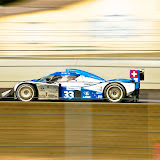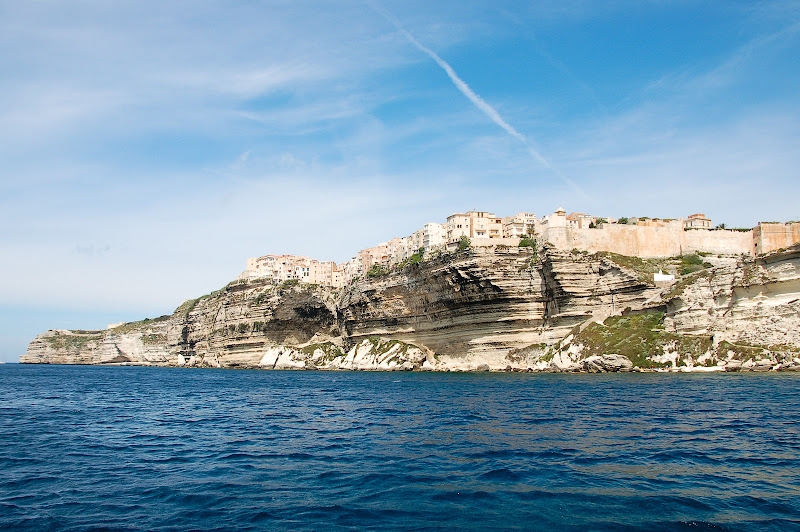First, a bit of background. Corsica is part of France as much as Hawaii is part of the US. It just happens to be an island and, as such, has a unique culture. Here's a map:
View Larger Map
Given Corsica's strategic location in the Mediterranean, it's been controlled by many different empires and countries. Over the millennia, it has only had a brief period of sovereignty. (For the full rundown, have a look at Wikipedia's History of Corsica.) That said, the people remain very independently minded which is seen in the island's motto, "Often conquered, never subdued." Unfortunately, this independence of mind has given rise to an armed separatist movement which has, at times, resorted to violence.
That said, we found the island and it's inhabitants extremely warm and welcoming, really it was a fantastic place.
People and Language
Like I said above, everyone that we met was absolutely fantastic. Maybe it's because we're tourists and are contributing to the economy, maybe it's because we were there early in the season, but whatever it was, the people were great.
People spontaneously offered us directions and local history. It was a bit like walking through some educational "period town" where people wearing funny clothes tell you, "Blacksmiths were an important part of the 18th century economy..." Except, in this case, they were wearing normal clothes and told us where we could buy food, where we could find the trail, and the history of the town.
The official language is French (of course) and everyone we met spoke it natively. That said, we also heard a lot of Corsican both spoken and on the radio. The language itself is very close to Italian, with its own variations.
Food
We ate really, really well on the trip. In the gîtes, it was a family-style meal, often with meat, pasta, and/or potatoes. Many of the ingredients were local, from the cheese (brucciu is one local favorite, it's somewhere between feta and ricotta, though it's only available in the spring and early summer) to the meat (goat, mutton, and wild boar being particularly popular).
The island is known for its charcuterie, the best of which comes from the aforementioned wild boar. I ate my fair share, rationalizing that it would really be too bad to miss out on this opportunity. We still have quite a bit in our refrigerator waiting to be eaten...
They drink a lot of wine (red, white, and rosé) which is all locally produced. I don't think that I saw a bottle of wine from the continent on a single restaurant menu. They also have surprisingly good beers, especially Pietra, a brown ale made from chestnuts.
The cuisine of the coasts is different from that of the interior, despite the small size of the island. In the mountains, they eat a lot of meat and cheese (including hard sheep and goat varieties) whereas the cuisine of the coasts includes that as well as plenty of seafood. The Mediterranean influences are clear throughout.
One disappointment was the bread, it was just nothing compared to what you get in Paris.
Hiking on the Trail
The trail itself was usually a narrow path cutting through the forests and scrub land that we crossed. It was marked, usually well, with orange stripes of paint.

We had topographical hiking maps with us, but only ever used them for confirmation of the route and estimating distances.
Life in the gîtes was quite nice. Though it wouldn't satisfy your needs if you were looking for a wilderness experience (I don't think anywhere in Western Europe would...), it is a really civilized way to hike. Your food is prepared for you, you have a bed and a shower every night, really it's quite nice. There is even a service that will transfer your bags from one gîte to the next so that you would, conceivably, never need to carry anything more than your lunch and water while hiking. That seems to defeat the purpose a bit, but it's nice to have the option.
It was also an opportunity to meet other hikers. We met a Swedish couple, a French guy (who had never lived in France) and his German friend, and a bunch of other nice people. There was only one somewhat strange, though even he was quite nice.
The Other Tourists
May is still rather early in the Corsican tourist season which, like most areas in France, peaks in July and August. That said, we were far from the only tourists on the island. It seems to be a popular destination for Germans and Swiss, as well as the French. It is especially popular with motorcyclists. Given the endlessly winding mountain roads, nice climate, and beautiful sights, this isn't much of a surprise. At an ice cream parlor in Porto Vecchio, we shared the terrace with 20 members of a German biker club.
The Roads
Narrow and winding, and all two lanes (or less). There's no highway on the island, and most of the major surface streets follow the coasts. Since we were there early in the season, traffic and parking were never a problem, but I can only imagine how bad it would be at the peak. Entering the popular town of Bonifacio, for example, is done by one, narrow road, in and out. According to the guidebook, it's common to have to wait several hours to be able to enter. Thankfully for us, it wasn't the case.
The Car
Having decided to rent a car for the second half of the trip, I got to drive a Renault for the first time. It was a new model, the Modus:

It had a 1.5L common rail diesel with a mere 85hp but 147ft-lbs of toque. For the driving conditions (narrow, winding mountain roads with plenty of corner exits) it was plenty competent to get around. What's better, it's rated at 52mpg and was averaging 47mpg in the mountains. Not bad at all.
Final Conclusions
In the end, it was one of the best pure vacations ever. Certainly it's nicer to visit family in the US, France, or Israel, but for simply discovering a new place, this trip was really wonderful. The combination of the difficult period at the beginning and the more relaxed period at the end was really ideal.
I hope that it won't be too long before we get back to Corsica...





















































